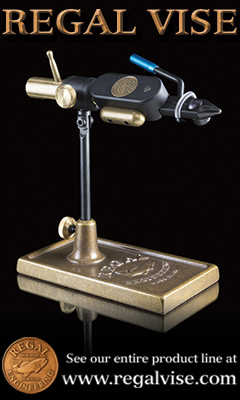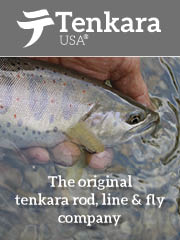 |
| Golden Stone |
This pattern has been particularly effective over the last few weeks. Many of our local streams have seen an emergence of large stone flies in late May. Trout have been keying in on these large nymphs as they move towards the shore to crawl onto to the bank in the evenings to molt into winged adult stoneflies.
Pattern Recipe:
Hook: Tiemco 200R (size 8-10)
Bead: Tungsten brown or black (3/16" for size 8)
Thread: Danville 210 denier white
Underbody: 8 wraps .30 lead wire
Tail: Goose biots (golden yellow)
Abdomen: Tapered thread underbody tinted with olive brown on top and golden yellow on bottom, covered with yellow or clear vinyl d-rib (medium)
Rib: Medium black wire
Thorax: Synthetic or natural dubbing in a golden stone color to match the natural
Wing case: Two Pheasant "church window" feather cut with a wing burner.
Legs: Round rubber (solid or barred)
Tying Instructions:
Although this pattern calls for a lot of materials it is relatively easy to tie.
Begin by mounting the bead and placing 8 wraps of the lead wire on the hook shank, pushing it up against the bead to hold it in place. Place a drop of head cement or super glue over the lead wraps.
Mount your thread behind the lead and wrap towards the bend of the hook, where you will tie in you split biot tail, wire ribbing and vinyl d-rib.
Next build up a tapered thread body and cover the lead wire with thread wraps. Once your underbody is formed, tint the thread with the markers, dark on top, light on the bottom.
Form the abdomen by wrapping the d-rib forward with tight touching wraps stretching the material slightly as you wrap it. Tie it off at the start of the lead wire. If you wrap it with the flat side of the material against the hook shank you will get a nice segmented appearance.
Next, wind the black wire rib forward allowing the wire to fill the grooves between the d-rib.
For the thorax apply dubbing to the thread and dub half of the remaining space on the hook shank behind the bead.
On top of the hook shank tie and the dubbing you just applied tie in one of the wing case feathers.
Apply additional dubbing to the thread and dub right up to the bead.
Next tie in the final wing case feather and tie in the rubber legs on each side of the fly. Apply a small amount of dubbing to cover your thread wraps and whip finish and apply head cement if desired.
 |
| Golden Stone (alternate view) |























